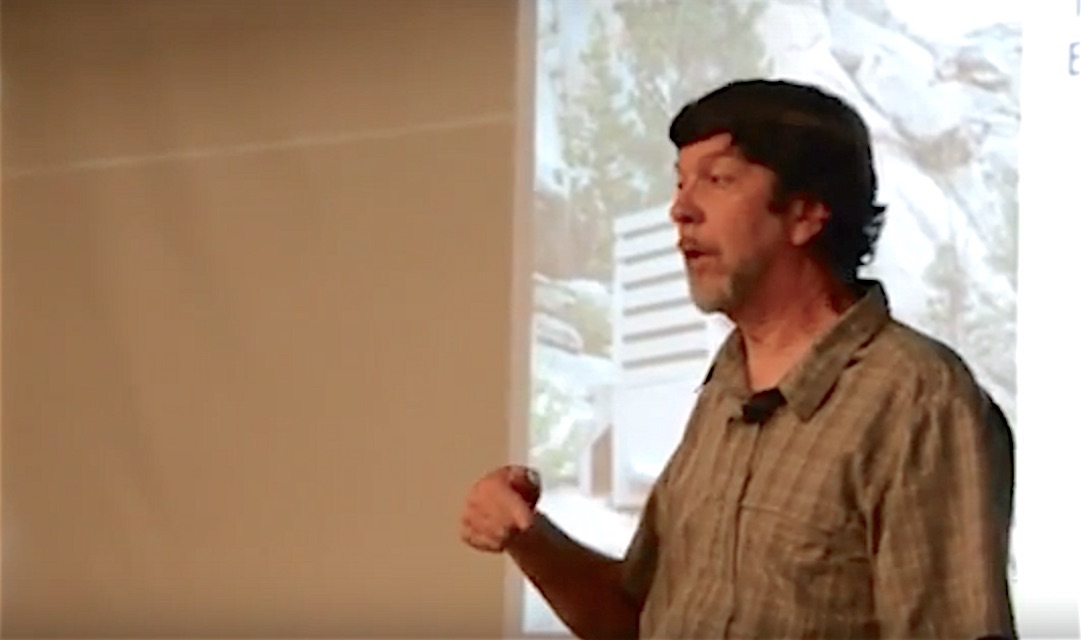Watch Joe Arnold’s talk below:
The solar dehydrating toilets on Longs Peak in Rocky Mountain National Park have been in successful operation since 1983. It is estimated that each toilet can handle up to 5,000 uses during the peak climbing season of July and August. Nearly all liquid waste is disposed of in a tray evaporator and about 50% of the solid waste weight is removed by dehydrating. The remaining waste is removed and hauled by llamas to a sewage transfer station for further treatment. The toilets were completely custom built to withstand high altitude and winter conditions, extreme winds, high ultraviolet degradation and animal damage. The key to the success of the Longs Peak solar toilet program has been a long term commitment to maintenance. Managers considering the use of this system in other locations are advised to assess the ability of maintenance workers to perform repairs in remote locations, the commitment to remove dried waste on a regular basis, and the availability of a place to dispose of dried end product before committing to this system.
Joe Arnold began his career with the National Park Service in 1975 and has worked in Grand Teton and Yellowstone National Parks. He was Park Engineer at Rocky Mountain National Park from 1981 to 2011 when he retired. He was involved in a 1982-83 US Public Health Service study that funded his design for the first generation of experimental solar dehydrating toilets on Longs Peak. Since that time the solar toilets have been upgraded and refined several times and are used in four remote locations in the Park. They have been in continuous operation for 32 years now.
